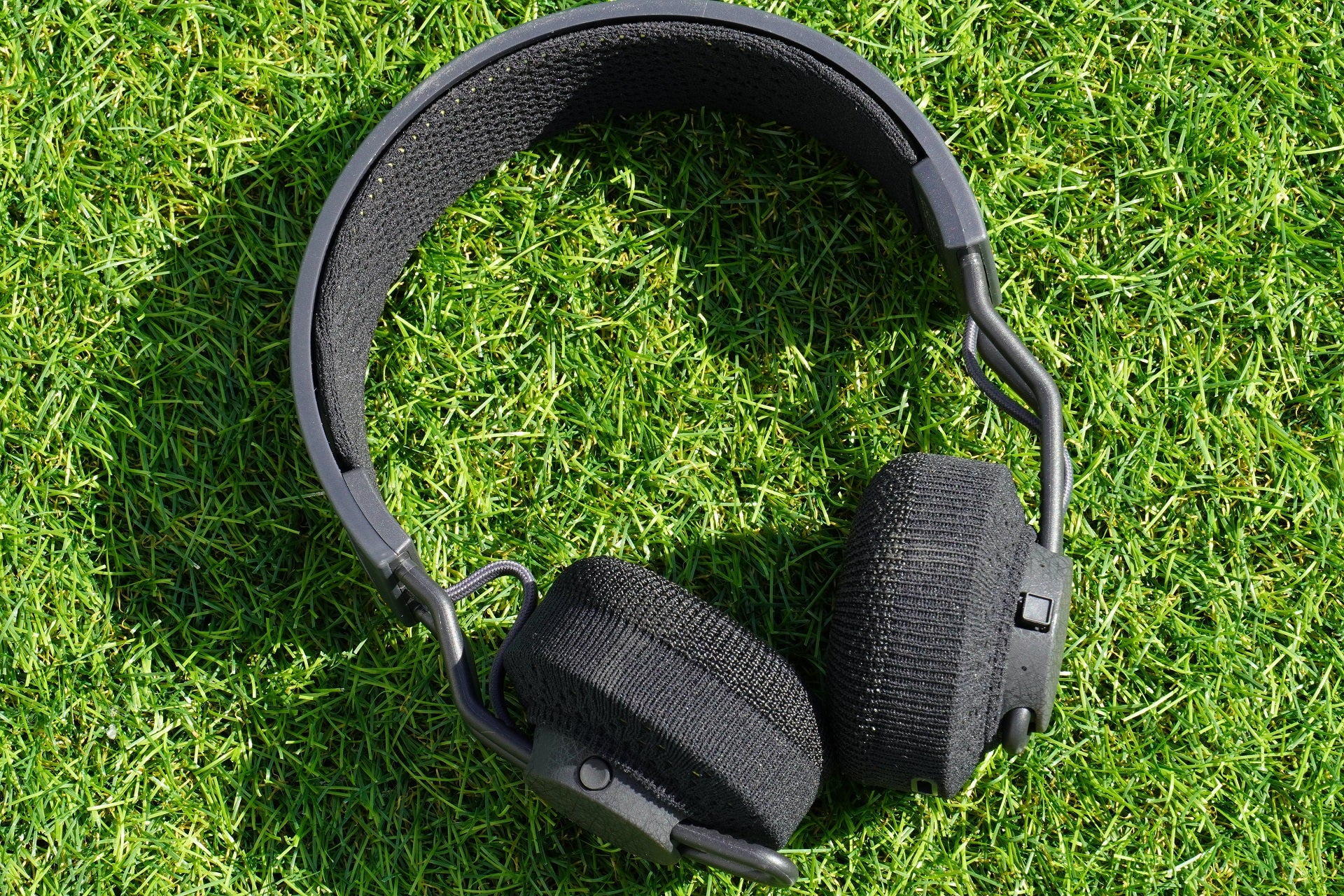Verdict
The Adidas RPT-02 SOL are headphones with an energetic audio performance and a design that harnesses the power of the sun to charge your exercise sessions. While they are more expensive than their predecessor, the performance and technology powering them is rock-solid.
Pros
- Rich, energetic audio
- Long, long battery life
- Eco-conscious and durable design with washable elements
Cons
- Original model offers a better-balanced sound
- Fairly expensive for workout headphones
- Some may find on-ear design uncomfortable
Availability
- UKRRP: £200
- USARRP: $229
- EuropeRRP: €229
- CanadaTBC
- AustraliaTBC
-
Exeger PowerFoyle technologyIntegrated solar panel charges up the battery -
Durable designSplashproof IPX4 rating with washable elements -
Bluetooth supportBluetooth 5.2 connection with aptX-HD support
Introduction
It’s not often (or indeed ever) that a review of headphone starts with lyrics from a New-age 70s band The 5th Dimensions, but Adidas’ latest headphones appear to be a believer in the words of letting the sunshine in.
The Adidas RPT-02 SOL, to call them by their slightly clunky name, are the latest headphones to feature Exeger’s Powerfoyle technology that first appeared in Urbanista’s Los Angeles headphones.
You may think that headphones powered by ambient light is a gimmicky feature, but think of these headphones from a sustainable perspective, and cans of the RPT-02 SOL’s ilk could usher in a more environmentally conscious era for headphone design.
Design
- Comfortable enough for on-ears
- Integrated solar cell for self-charging
- IPX4 rating
Design is the place to start with the RPT-02 SOL. They’re comparable in look to the RPT-01 (which are still available), constructed out of similar metal and (recycled) plastic materials though they are heavier at 256g (209g for the original). Despite that, I didn’t notice much difference in weight when swapping between the two.
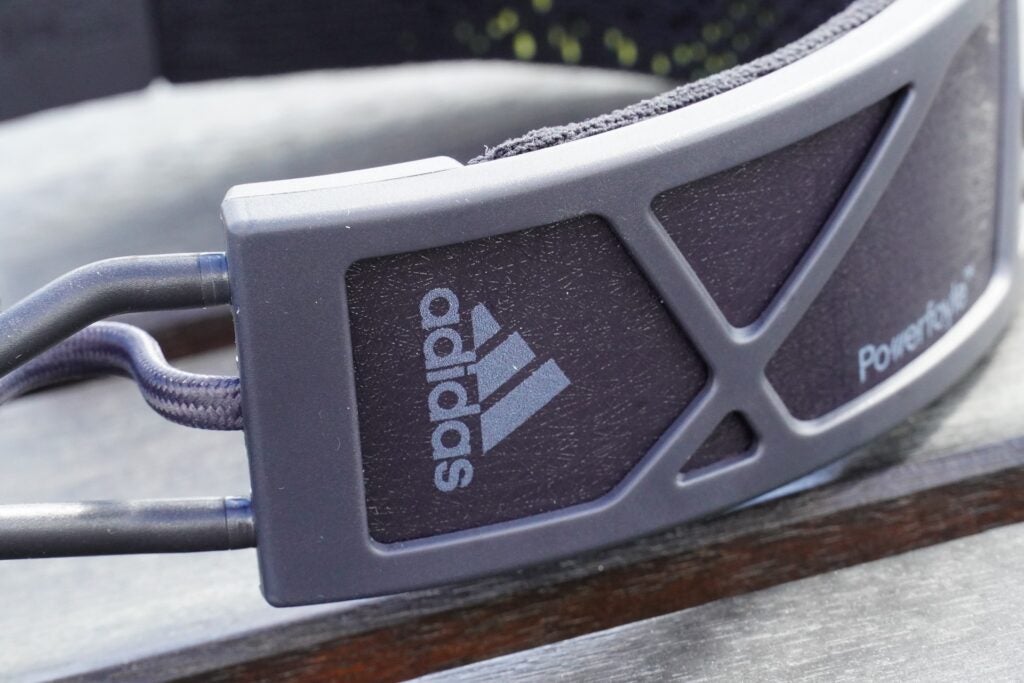
The SOL are a lightweight pair but given they’re from the on-ear family, they do suffer from issues such as on-ear pinching and outside noises filtering through. However, you arguably do want outside sounds filtering through on a run anyway. The pinching didn’t occur too often and when it did, it was usually deep into a run (around 35-minute mark) and only a slight shift was required to alleviate the pressure.
The difference between the two headphones is the headband, which is wider on the RPT-02 to incorporate the solar cell that absorbs light. The difference in the width of the headband is likely a boon in terms of distributing that heavier load across the head. They’re not as bendy and flexible, but I wouldn’t hesitate in chucking these into bag once a gym session is over as they retain a rugged sensibility.
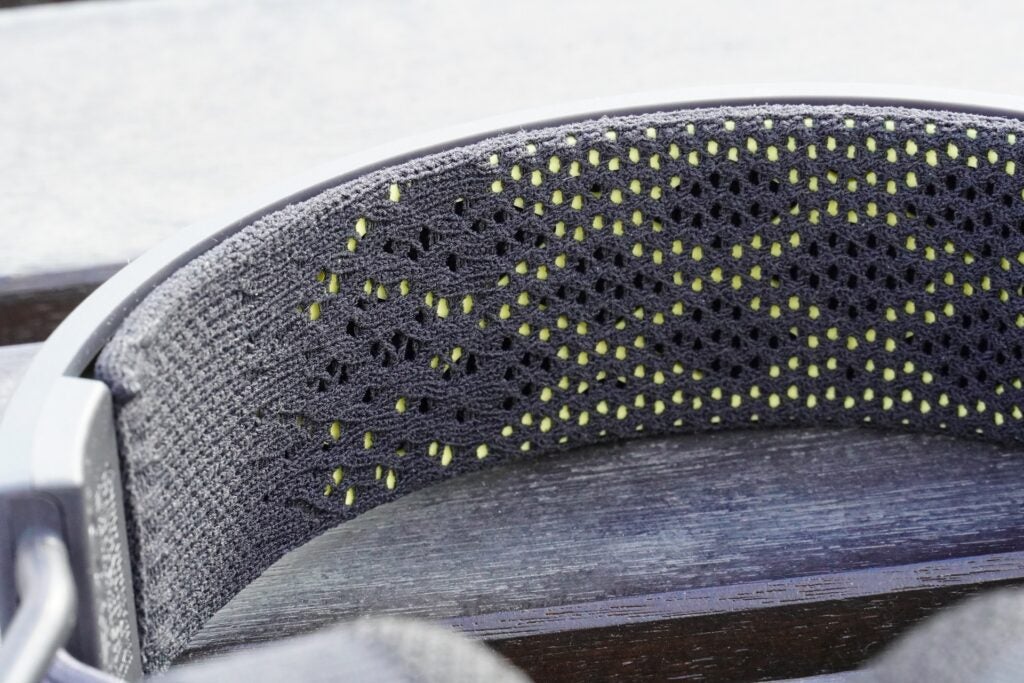
The fabric on the underside of the headband and over the ear-cups can be stripped off and chucked into the washing machine to give them a clean. Given that they are sports headphones they’re also rated to IPX4, which protects them against splashes of water and perspiration.
The control scheme remains the same too and intuitive to use at that. The multi-function dial covers power (long hold), Bluetooth pairing (an even longer hold) playback (a single press), track skipping (a flick to the left or right) and volume (flick up or down). It’s like the controls for Marshall headphones, which is no surprise given both are made by Zound Industries.
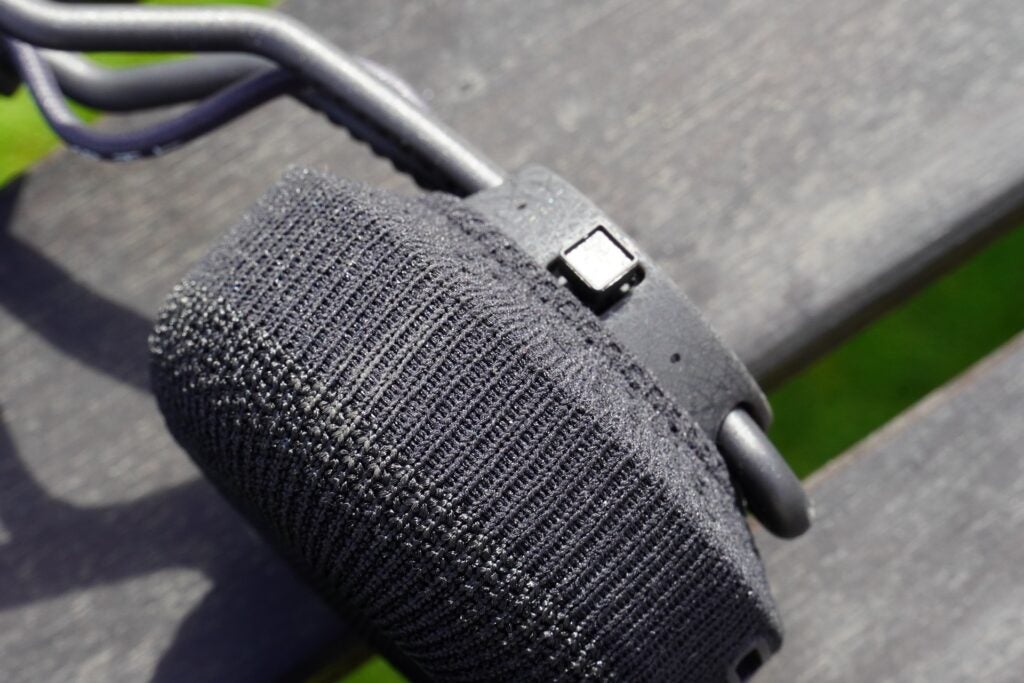
There’s an Action button on the left where a press/hold checks the light condition (how much light it’s absorbing at any time), while the double or triple press can be customized to access a voice assistant, open Spotify or the Adidas Running app. Not in an environment where the headphones can self-charge? Then there’s a USB-C port to do so by traditional means.
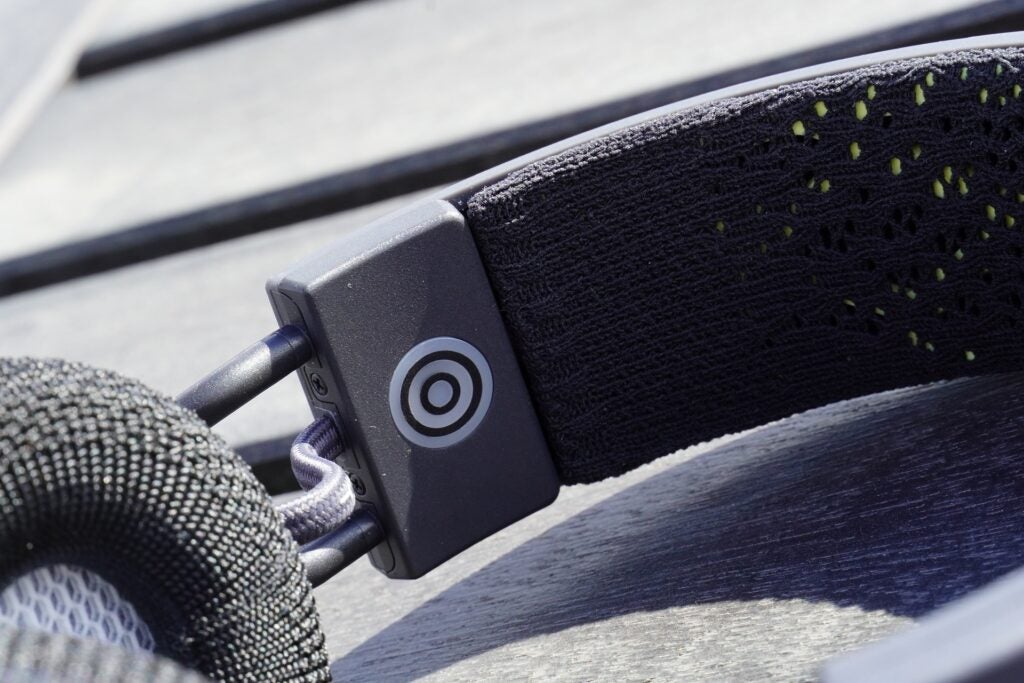
Features
- Really long battery life
- aptX-HD upgrade over original
- Customisation in Adidas Headphones app
The solar absorption panel is going to grab the headlines, but its performance is diminished depending on where it is. The headphones’ absorption rate is reduced in overcast and indoor environments, so while it’ll still soak up ambient light, it won’t do so at the same rate as it would in direct sunlight.
The solar panel is undoubtedly a very cool feature, though I wouldn’t say that it tops up the reserves of battery as such, more that it slows down the rate at which the battery discharges. Having used them for several runs over a period of six weeks (around 40 minutes each time), the RPT-02 SOL dropped from 51% to 43% – I’d say that’s an excellent figure for any pair of headphones.
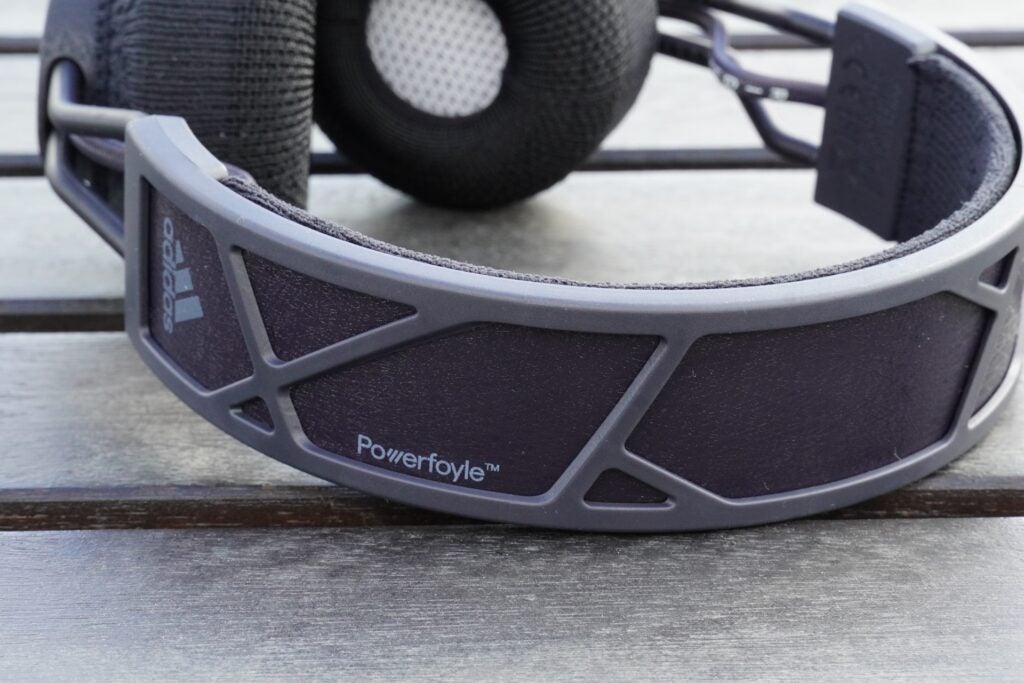
If, say, you’re running at night, Adidas says you’ll have a reliable reserve of 80-hours to count on when fully charged, which is double that of the original. There’s no fast-charging (it’s not necessary with the solar panel) and filling the tank to full over USB-C is a reported two hours.
Bluetooth connectivity is version 5.2 with support up to aptX-HD. That would indicate high-res audio support but of the lossy (and lower quality) kind. True lossless playback still evades Bluetooth streaming at this moment in time.
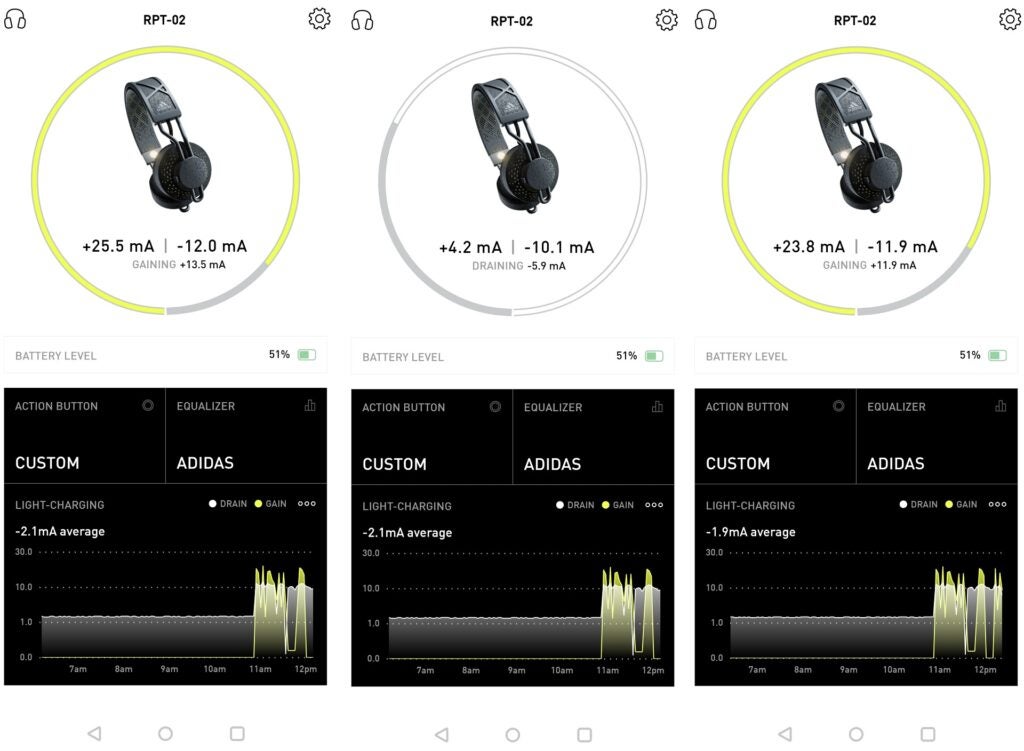
There’s not much else less to chat about aside from the Adidas Headphones app. It offers means and ways of customising audio with several presets available (you can edit any one of them or create a custom version). There’s also the ability to control music playback within the app as well as see the rate at which the RPT-02 is charging in real-time with net drain and gain (at the top of the app) along with a simpler, easy-to-understand version that shows whether the headphones are charging or discharging.
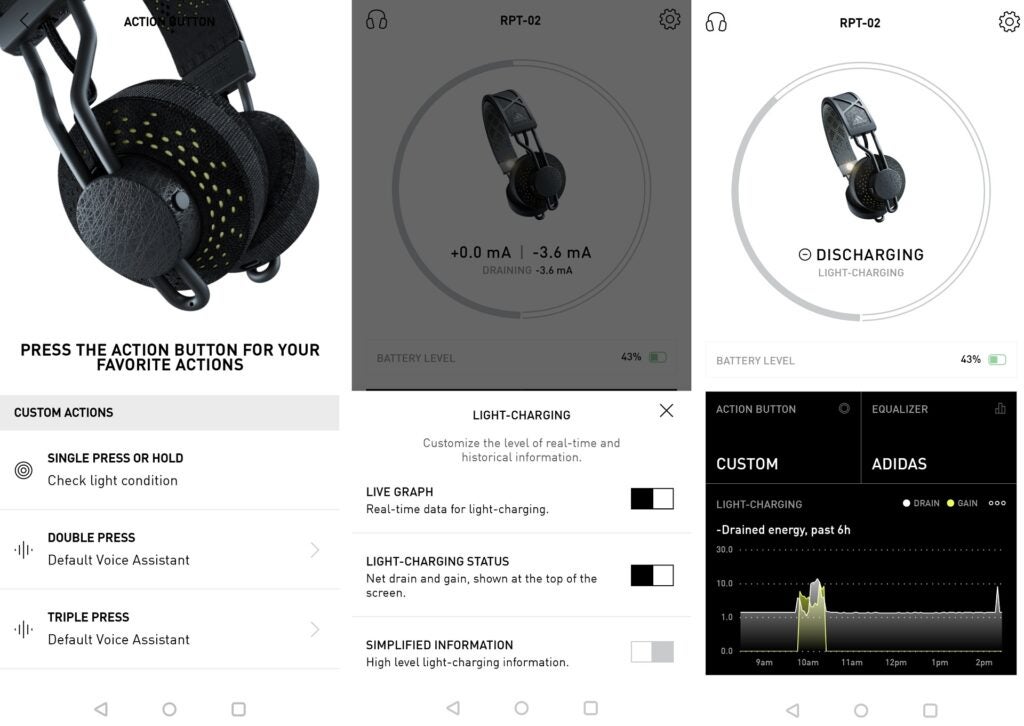
Sound Quality
- Rich, energetic performance
- Trades warmth for some detail and clarity
The RPT-02 SOL carry a warmer tone than their predecessor that’s most evident with bassy tracks. Busta Rhymes’ classic hip-hop track Touch It displays a greater low-end performance – the booming club beats are conveyed with more depth and more richness. The beats don’t just hit with a thud but reverberate with more extension, bigger in size and having a greater presence within the frequency range.
It’s not just the bass that’s provided with more oomph, but the midrange is warmer too. The slight crispness and neutral tone for vocals that the original had is replaced by a performance that’s richer, smoother but not as detailed.
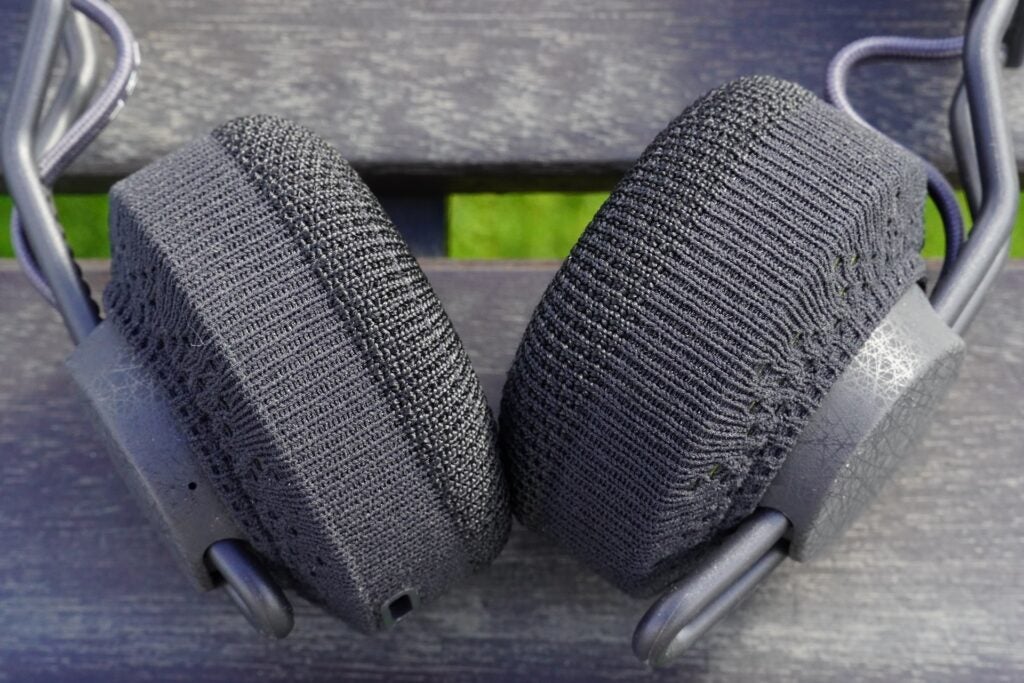
Bass and vocals take on a greater presence within the soundstage, but the soundstage only feels slightly bigger than it did before. The effect is not one where I think anything sounds squashed, but comparing the two headphones, the RPT-02 SOL are more boisterous and energetic, while the RPT-01 take a more nuanced and balanced approach to handling the frequency range.
Either approach is both fine and welcome, tuning headphones for more bass is a trend that seems to be more popular for running headphones and for listening during workouts. Perhaps it’s that subliminal sense that bass gets you more amped for workouts or to get your energy up for a run. It certainly is the case for me.
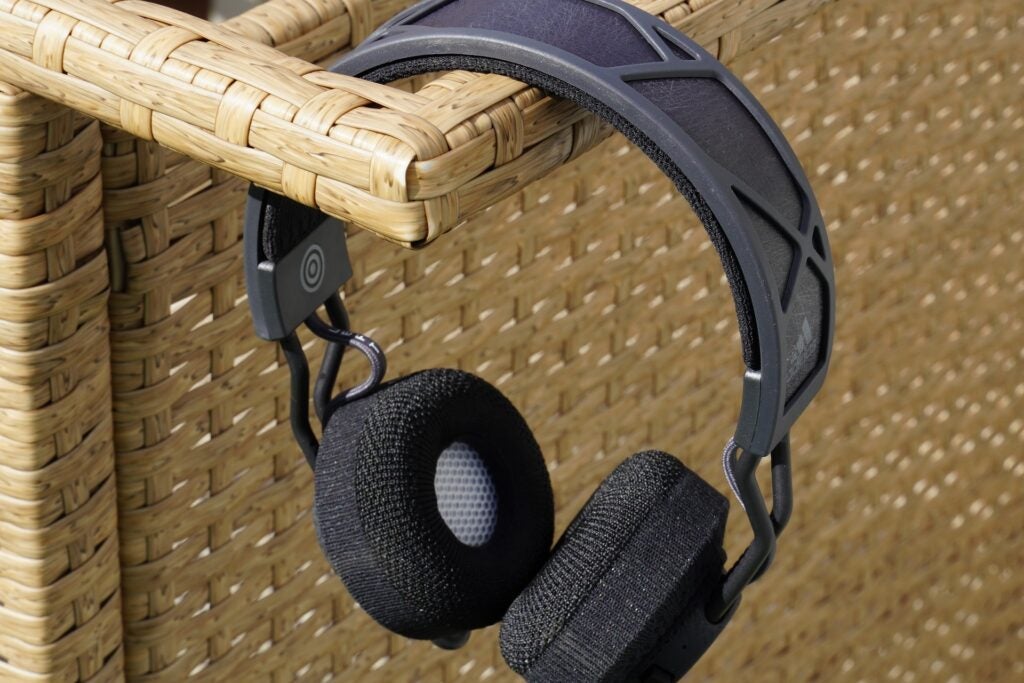
With Tom Morello’s cover of Voodoo Child, the RPT-02 explode with more energy, power and dynamic ability. Neither headphone is packed to the rafters with a forensic sense of detail. The RPT-01 takes the win in this particular battle thanks to their clearer, neutral tone but what’s provided by the SOL is good enough in a broad sense, and the energy and bombast of its sound is a compelling alternative, as is the slightly more vividly realised stereo image that tracks Morello’s guitar as it pans across the soundstage, etching out more depth. Of the two it’s the RPT-02 that offers the more exciting listen.
That richness extends to the top end of the frequency range, a smoother approach taken to the piano in GoGo Penguin’s Atomised. It’s short of top-end brilliance and shine, and the tonal variation of the piano is less easy to distinguish. To be clear, I don’t think the RPT-02 SOL are a better-sounding headphone than the RPT-01, but don’t let that necessarily dissuade you. They’re a fun and energetic ride, and for workouts that feels like an enjoyable fit.
Latest deals
Should you buy it?
To save on those energy bills: Though charging headphones via USB-C likely won’t take up as much power as other household items, it’s a welcome approach to design that saves energy by channeling it.
The price gives you pause: £200 is a lot for a pair of headphones designed mainly for running and workouts. Stock at the time of review was going in and out, with demand outstripping supply
Final Thoughts
I’ve always felt I underrated the RPT-01 when I first reviewed it; four-stars would have been suitable despite what I thought was an expensive price tag at the time. It’s a similar feeling I have with the RPT-02, the overall package is deserving of a recommendation, despite the increase in price.
The increase in price is a sticking point, especially as the RPT-01 presents better balanced and clearer audio but the richness and energy of the SOL version is fun and not without its charms.
The integrated solar panel is an excellent feature, and in terms of a more eco-conscious design it is not just a welcome step forward but a necessary one. A pricey but enjoyable headphone for workouts and runs.
How we test
We test every set of headphones we review thoroughly over an extended period of time. We use industry standard tests to compare features properly. We’ll always tell you what we find. We never, ever, accept money to review a product.
Find out more about how we test in our ethics policy.
Tested across a six week period
Tested with real world use
FAQs
There are two ways of charging the RPT-02 SOL headphones. One is through the solar cell embedded in the headband that soaks up sunlight to charge the headphones’ internal battery. The other is through the USB-C port.
Jargon buster
Bluetooth
Bluetooth – named after 10th-century Danish king Harald Bluetooth who united Denmark’s tribes into a single kingdom – is a method of wireless transmission that allows for the exchange of data between devices over short distances.
aptX
Qualcomm’s aptX codec can support higher quality audio than Bluetooth alone.
Verdict
The Adidas RPT-02 SOL are headphones with an energetic audio performance and a design that harnesses the power of the sun to charge your exercise sessions. While they are more expensive than their predecessor, the performance and technology powering them is rock-solid.
Pros
- Rich, energetic audio
- Long, long battery life
- Eco-conscious and durable design with washable elements
Cons
- Original model offers a better-balanced sound
- Fairly expensive for workout headphones
- Some may find on-ear design uncomfortable
Availability
- UKRRP: £200
- USARRP: $229
- EuropeRRP: €229
- CanadaTBC
- AustraliaTBC
-
Exeger PowerFoyle technologyIntegrated solar panel charges up the battery -
Durable designSplashproof IPX4 rating with washable elements -
Bluetooth supportBluetooth 5.2 connection with aptX-HD support
Introduction
It’s not often (or indeed ever) that a review of headphone starts with lyrics from a New-age 70s band The 5th Dimensions, but Adidas’ latest headphones appear to be a believer in the words of letting the sunshine in.
The Adidas RPT-02 SOL, to call them by their slightly clunky name, are the latest headphones to feature Exeger’s Powerfoyle technology that first appeared in Urbanista’s Los Angeles headphones.
You may think that headphones powered by ambient light is a gimmicky feature, but think of these headphones from a sustainable perspective, and cans of the RPT-02 SOL’s ilk could usher in a more environmentally conscious era for headphone design.
Design
- Comfortable enough for on-ears
- Integrated solar cell for self-charging
- IPX4 rating
Design is the place to start with the RPT-02 SOL. They’re comparable in look to the RPT-01 (which are still available), constructed out of similar metal and (recycled) plastic materials though they are heavier at 256g (209g for the original). Despite that, I didn’t notice much difference in weight when swapping between the two.

The SOL are a lightweight pair but given they’re from the on-ear family, they do suffer from issues such as on-ear pinching and outside noises filtering through. However, you arguably do want outside sounds filtering through on a run anyway. The pinching didn’t occur too often and when it did, it was usually deep into a run (around 35-minute mark) and only a slight shift was required to alleviate the pressure.
The difference between the two headphones is the headband, which is wider on the RPT-02 to incorporate the solar cell that absorbs light. The difference in the width of the headband is likely a boon in terms of distributing that heavier load across the head. They’re not as bendy and flexible, but I wouldn’t hesitate in chucking these into bag once a gym session is over as they retain a rugged sensibility.

The fabric on the underside of the headband and over the ear-cups can be stripped off and chucked into the washing machine to give them a clean. Given that they are sports headphones they’re also rated to IPX4, which protects them against splashes of water and perspiration.
The control scheme remains the same too and intuitive to use at that. The multi-function dial covers power (long hold), Bluetooth pairing (an even longer hold) playback (a single press), track skipping (a flick to the left or right) and volume (flick up or down). It’s like the controls for Marshall headphones, which is no surprise given both are made by Zound Industries.

There’s an Action button on the left where a press/hold checks the light condition (how much light it’s absorbing at any time), while the double or triple press can be customized to access a voice assistant, open Spotify or the Adidas Running app. Not in an environment where the headphones can self-charge? Then there’s a USB-C port to do so by traditional means.

Features
- Really long battery life
- aptX-HD upgrade over original
- Customisation in Adidas Headphones app
The solar absorption panel is going to grab the headlines, but its performance is diminished depending on where it is. The headphones’ absorption rate is reduced in overcast and indoor environments, so while it’ll still soak up ambient light, it won’t do so at the same rate as it would in direct sunlight.
The solar panel is undoubtedly a very cool feature, though I wouldn’t say that it tops up the reserves of battery as such, more that it slows down the rate at which the battery discharges. Having used them for several runs over a period of six weeks (around 40 minutes each time), the RPT-02 SOL dropped from 51% to 43% – I’d say that’s an excellent figure for any pair of headphones.

If, say, you’re running at night, Adidas says you’ll have a reliable reserve of 80-hours to count on when fully charged, which is double that of the original. There’s no fast-charging (it’s not necessary with the solar panel) and filling the tank to full over USB-C is a reported two hours.
Bluetooth connectivity is version 5.2 with support up to aptX-HD. That would indicate high-res audio support but of the lossy (and lower quality) kind. True lossless playback still evades Bluetooth streaming at this moment in time.

There’s not much else less to chat about aside from the Adidas Headphones app. It offers means and ways of customising audio with several presets available (you can edit any one of them or create a custom version). There’s also the ability to control music playback within the app as well as see the rate at which the RPT-02 is charging in real-time with net drain and gain (at the top of the app) along with a simpler, easy-to-understand version that shows whether the headphones are charging or discharging.

Sound Quality
- Rich, energetic performance
- Trades warmth for some detail and clarity
The RPT-02 SOL carry a warmer tone than their predecessor that’s most evident with bassy tracks. Busta Rhymes’ classic hip-hop track Touch It displays a greater low-end performance – the booming club beats are conveyed with more depth and more richness. The beats don’t just hit with a thud but reverberate with more extension, bigger in size and having a greater presence within the frequency range.
It’s not just the bass that’s provided with more oomph, but the midrange is warmer too. The slight crispness and neutral tone for vocals that the original had is replaced by a performance that’s richer, smoother but not as detailed.

Bass and vocals take on a greater presence within the soundstage, but the soundstage only feels slightly bigger than it did before. The effect is not one where I think anything sounds squashed, but comparing the two headphones, the RPT-02 SOL are more boisterous and energetic, while the RPT-01 take a more nuanced and balanced approach to handling the frequency range.
Either approach is both fine and welcome, tuning headphones for more bass is a trend that seems to be more popular for running headphones and for listening during workouts. Perhaps it’s that subliminal sense that bass gets you more amped for workouts or to get your energy up for a run. It certainly is the case for me.

With Tom Morello’s cover of Voodoo Child, the RPT-02 explode with more energy, power and dynamic ability. Neither headphone is packed to the rafters with a forensic sense of detail. The RPT-01 takes the win in this particular battle thanks to their clearer, neutral tone but what’s provided by the SOL is good enough in a broad sense, and the energy and bombast of its sound is a compelling alternative, as is the slightly more vividly realised stereo image that tracks Morello’s guitar as it pans across the soundstage, etching out more depth. Of the two it’s the RPT-02 that offers the more exciting listen.
That richness extends to the top end of the frequency range, a smoother approach taken to the piano in GoGo Penguin’s Atomised. It’s short of top-end brilliance and shine, and the tonal variation of the piano is less easy to distinguish. To be clear, I don’t think the RPT-02 SOL are a better-sounding headphone than the RPT-01, but don’t let that necessarily dissuade you. They’re a fun and energetic ride, and for workouts that feels like an enjoyable fit.
Latest deals
Should you buy it?
To save on those energy bills: Though charging headphones via USB-C likely won’t take up as much power as other household items, it’s a welcome approach to design that saves energy by channeling it.
The price gives you pause: £200 is a lot for a pair of headphones designed mainly for running and workouts. Stock at the time of review was going in and out, with demand outstripping supply
Final Thoughts
I’ve always felt I underrated the RPT-01 when I first reviewed it; four-stars would have been suitable despite what I thought was an expensive price tag at the time. It’s a similar feeling I have with the RPT-02, the overall package is deserving of a recommendation, despite the increase in price.
The increase in price is a sticking point, especially as the RPT-01 presents better balanced and clearer audio but the richness and energy of the SOL version is fun and not without its charms.
The integrated solar panel is an excellent feature, and in terms of a more eco-conscious design it is not just a welcome step forward but a necessary one. A pricey but enjoyable headphone for workouts and runs.
How we test
We test every set of headphones we review thoroughly over an extended period of time. We use industry standard tests to compare features properly. We’ll always tell you what we find. We never, ever, accept money to review a product.
Find out more about how we test in our ethics policy.
Tested across a six week period
Tested with real world use
FAQs
There are two ways of charging the RPT-02 SOL headphones. One is through the solar cell embedded in the headband that soaks up sunlight to charge the headphones’ internal battery. The other is through the USB-C port.
Jargon buster
Bluetooth
Bluetooth – named after 10th-century Danish king Harald Bluetooth who united Denmark’s tribes into a single kingdom – is a method of wireless transmission that allows for the exchange of data between devices over short distances.
aptX
Qualcomm’s aptX codec can support higher quality audio than Bluetooth alone.


















